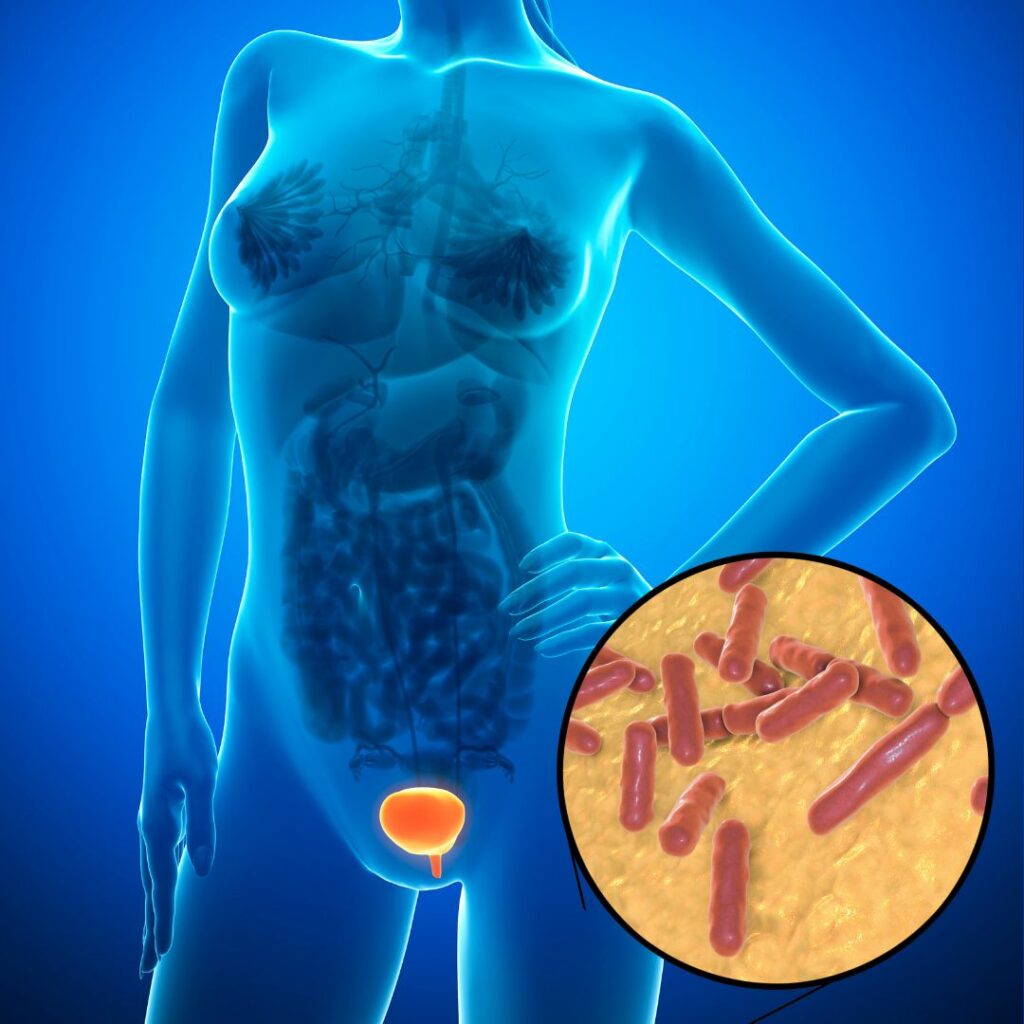Free shipping on all orders over $50 | Subscribe & save 15%
Free shipping on all orders over $50 | Subscribe & save 15%

When most people think about the word “microbiome,” the gut usually comes to mind. But your vagina and bladder also have their own unique communities of bacteria that play an essential role in keeping you healthy. These tiny organisms in your vaginal and bladder microbiome aren’t just passengers, they actively protect against infection, maintain comfort, and support overall pelvic health. As women move through different life stages, especially perimenopause and menopause, changes in these microbiomes can have a big impact on how the vagina and bladder feel and function.

The vaginal microbiome is made up primarily of friendly bacteria called Lactobacillus. These bacteria produce lactic acid, which keeps the vaginal environment slightly acidic, usually between a pH of 3.8 and 4.5. That acidity is like a security system, discouraging harmful bacteria and yeast from overgrowing. When the balance is disrupted, a situation called dysbiosis, uncomfortable conditions like bacterial vaginosis or yeast infections can develop. Hormonal changes, antibiotics, douching, or even stress can all shift this delicate balance.
For many years, doctors believed the bladder was sterile, but research now shows that it also has its own microbiome. A healthy bladder microbiome may help prevent urinary tract infections by crowding out harmful bacteria and supporting the immune system. When this system is disrupted, women may experience recurrent UTIs, urinary urgency, or bladder discomfort, even without infection. And because the bladder and vagina are so closely connected, shifts in one microbiome can influence the other.

When the vaginal microbiome becomes imbalanced, it doesn’t just affect the vagina, it can also spill over into urinary health. For example, harmful bacteria can move from the vagina into the urethra, where they can cause UTIs. This is one reason why women who experience frequent bacterial vaginosis may also struggle with repeated UTIs. Even shifts that seem minor, such as dryness, can reduce the vagina’s natural defenses and make the urinary tract more vulnerable.
The connection works the other way, too. When the bladder microbiome is disrupted, it can create chronic inflammation or infections that also disturb the nearby vaginal environment. For instance, women with frequent UTIs may notice ongoing vaginal irritation, burning, or pain during intimacy, even when tests no longer show an active infection. The antibiotics often prescribed for UTIs can also wipe out protective vaginal bacteria, creating a cycle where bladder and vaginal health issues keep feeding into each other. This two-way relationship shows why it is important to think about the bladder and vagina as a shared ecosystem rather than separate organs.
Estrogen is a key player in maintaining both vaginal and bladder health. During perimenopause and menopause, declining estrogen levels change the environment of these tissues. The vaginal lining becomes thinner, drier, and less elastic. At the same time, the loss of estrogen reduces Lactobacillus levels, raising vaginal pH and leaving more room for harmful bacteria or yeast to take hold. The bladder is affected as well, which is why some women notice more frequent UTIs, urgency, or burning.
These changes together are known as genitourinary syndrome of menopause (GSM). GSM is not just about dryness; it is a cluster of symptoms that can include painful intercourse, urinary urgency, increased infections, and general discomfort in the vaginal and bladder areas. It is extremely common, yet often under-discussed, leaving many women to feel isolated or unsure of why their bodies suddenly feel so different.
The good news is that there are ways to support the vaginal and bladder microbiome. Vaginal moisturizers and lubricants can improve comfort. For many women, low-dose vaginal estrogen therapy helps restore the tissue. Maintaining hydration, avoiding harsh soaps or douching, and supporting gut health with a balanced diet can also make a difference.

Furthermore, there are pre- and probiotic supplements, such as Femetry that can help. Femetry’s Bladder Flora Balance replenishes Lactobacillus levels, as well as help flush out harmful bacteria from the urine using D-Mannose. I recommend this product to my patients who suffer from chronic UTIs, are going through perimenopause or menopause, or have recently used antibiotics which can create imbalances in the genitourinary biomes, regardless of what they were originally treating.
Understanding the vaginal and bladder microbiome helps explain why these symptoms happen and why treatment works. By taking care of these bacterial communities, and by not ignoring the changes caused by menopause, infection or other chronic conditions, you can feel more comfortable, more confident, and more in control of your pelvic health at every stage of life.
Disclaimer: I’ve been recommending Femetry for years! I am now proud to announce that I have recently partnered with Femetry to pass along savings to you! Use my code ‘DRUROGYN15’ to get 15% off your order!